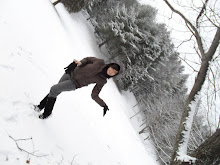Cezanne changed the way painters viewed their worlds by moving back and forth from imagination to reality, the expression of color in nature. He influenced Picasso and Braque to paint in a style called after Cubism.
If one look at his landscapes, one can see how Cezanne eliminated a lot of perspective, in other words, the artist changed painting and the "art world" by eliminating 3D, one see that in cubism and all modern art up to today; as well as the use of geometric shapes for common things.

Cezanne was obsessed with form rather than content, so the subject was not important to him, also he paved the way for modern art by directly influencing Cubists. This artist used an
impasto technique-thick, emotional strokes stabbing at the canvas with his palette knife. Artists use this technique today.

Cezanne wanted to paint the visual field into simpler elements and he used planes of colour and small brushstrokes that build up to form complex fields, at once both a direct expression of the sensations of the observing eye and an abstraction from observed nature. The paintings convey Cézanne's intense study of his subjects, a searching gaze and a dogged struggle to deal with the complexity of human visual perception.
 The realism in his pictures and le had a great influence on the impressionists and, through them, on 20th-century art. Norman Rockwell was a 20th century American painter and illustrator. His works enjoy a broad popular appeal in the United States, where Rockwell is most famous for the cover illustrations of everyday life scenarios.
The realism in his pictures and le had a great influence on the impressionists and, through them, on 20th-century art. Norman Rockwell was a 20th century American painter and illustrator. His works enjoy a broad popular appeal in the United States, where Rockwell is most famous for the cover illustrations of everyday life scenarios.



 Cezanne was obsessed with form rather than content, so the subject was not important to him, also he paved the way for modern art by directly influencing Cubists. This artist used an impasto technique-thick, emotional strokes stabbing at the canvas with his palette knife. Artists use this technique today.
Cezanne was obsessed with form rather than content, so the subject was not important to him, also he paved the way for modern art by directly influencing Cubists. This artist used an impasto technique-thick, emotional strokes stabbing at the canvas with his palette knife. Artists use this technique today.
